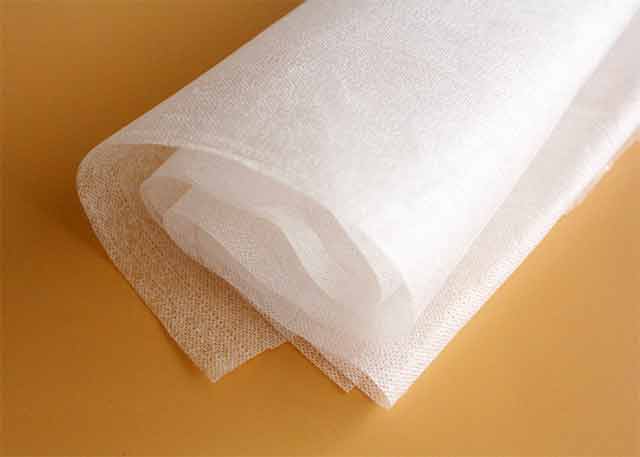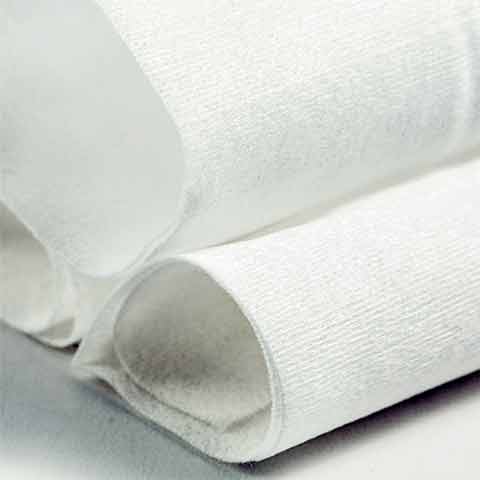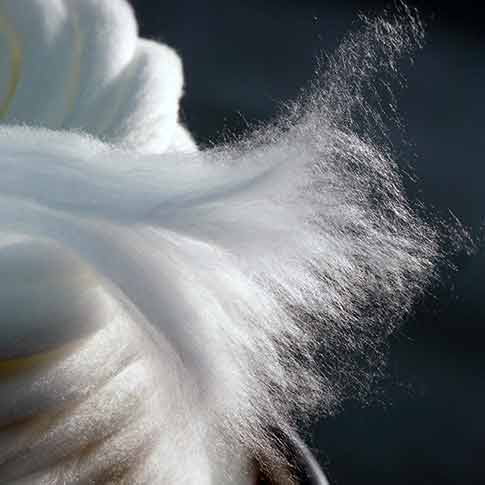+86-18927501869
- All
- Product Name
- Product Keyword
- Product Model
- Product Summary
- Product Description
- Multi Field Search
 English
EnglishViews: 1355 Author: Allen Yi Publish Time: 2025-02-16 Origin: Site

Spunlace Nonwoven Material
When it comes to personal hygiene, cleaning, or even makeup removal, wet wipes have become an indispensable part of our daily lives. But have you ever stopped to think about what goes into making these convenient little sheets? As a leading wet wipes manufacturer, we understand the importance of quality and innovation in creating products that are both effective and safe for consumers. The material of wet wipes plays a crucial role in their performance, comfort, and environmental impact. In this comprehensive article, we'll dive deep into the world of wet wipe materials, exploring everything from the most common types to the latest innovations. Whether you're a parent looking for the best baby wipes, an eco-conscious consumer, or just curious about how wipes are made, this guide has you covered.
The material of wet wipes is more important than you might think. It determines:
• Softness and Comfort: How gentle the wipes are on your skin.
• Durability: Whether the wipes tear or hold up during use.
• Absorbency: How well they clean and retain moisture.
• Environmental Impact: Whether they're biodegradable or contribute to pollution.
Understanding the different wet wipe materials can help you choose the right product for your needs while making informed decisions about sustainability and skin health.

Cotton Fiber Material
Nonwoven fabrics are the most widely used material of wet wipes. These fabrics are made by bonding fibers together mechanically, chemically, or thermally, rather than weaving or knitting them.
• Spunlace: Soft, durable, and highly absorbent, spunlace is the most common material for wet wipes. It's made by entangling fibers with high-pressure water jets, making it gentle on the skin.
• Airlaid: Lightweight and highly absorbent, airlaid fabrics are often used in cleaning wipes.
• Meltblown: Known for its fine fibers, meltblown is used in wipes that require high filtration, such as disinfectant wipes.
• Soft and gentle on the skin.
• Highly absorbent and durable.
• Cost-effective and versatile.
Most nonwoven fabrics are made from synthetic materials like polyester or polypropylene, which are not biodegradable.
• Cotton is a natural fiber that's soft, breathable, and biodegradable, making it a popular choice for eco-friendly wet wipes.
• Gentle on sensitive skin.
• Biodegradable and compostable.
• Renewable and sustainable.
• More expensive than synthetic materials.
• Less durable when wet compared to nonwoven fabrics.
Bamboo is one of the most sustainable wet wipe materials available. It's naturally antibacterial, hypoallergenic, and biodegradable.
• Eco-friendly and renewable.
• Soft and gentle on the skin.
• Naturally antimicrobial, reducing the need for chemical preservatives.
• Slightly more expensive than traditional materials.
• Limited availability compared to nonwoven fabrics.
Wood pulp is another natural material used in wet wipes. It's often blended with synthetic fibers to improve durability.
• Biodegradable and compostable.
• Soft and absorbent.
• Cost-effective.
• May not be as durable as synthetic materials.
• Sourcing wood pulp can contribute to deforestation if not managed sustainably.
Some manufacturers are now using recycled materials, such as recycled polyester or plastic bottles, to produce wet wipes.
• Reduces plastic waste and environmental impact.
• Durable and cost-effective.
• Not biodegradable.
• May not be as soft as other materials.
As consumers become more eco-conscious, manufacturers are developing wet wipes made from biodegradable and compostable materials like:
• PLA (Polylactic Acid): Derived from cornstarch or sugarcane, PLA is a biodegradable plastic alternative.
• Plant-Based Fibers: Materials like hemp, flax, and coconut fibers are being used to create sustainable wipes.
Some wet wipes are now made with fabrics infused with natural antimicrobial agents like silver ions or tea tree oil, reducing the need for chemical preservatives.
Water-soluble wipes dissolve in water, making them an excellent option for flushable wipes. However, they must meet strict standards to avoid plumbing issues.
VEOCEL™ Lyocell fabric is renowned for its sustainable closed-loop production process, which recovers and reuses over 99% of solvents, making it an eco-friendly choice. This fabric boasts a naturally smooth texture, providing enhanced comfort and softness that is gentle enough for sensitive skin. Its exceptional qualities make it an ideal blend material for a wide range of nonwoven products, including baby wipes, facial cleansing wipes, flushable wipes, intimate feminine wipes, hygiene products, baby diapers, and adult diapers. Additionally, VEOCEL™ Lyocell fabric may also address the issue of inadequate water resistance in woven apparel fabrics, further expanding its potential applications.
Learn more: https://www.veocel.com

VEOCEL Lyocell Fabric
If you or your family members have sensitive skin, opt for wet wipes made from natural materials like cotton or bamboo. These materials are gentle, hypoallergenic, and free from harsh chemicals.
Choose wet wipes made from biodegradable or compostable materials like bamboo, PLA, or plant-based fibers. Look for certifications like FSC (Forest Stewardship Council) or USDA Organic to ensure sustainability.
For cleaning tasks that require durability and absorbency, nonwoven fabrics like spunlace or airlaid are your best bet.
Compact and durable wipes made from nonwoven fabrics or recycled materials are ideal for travel.
Environmental Impact of Wet Wipe Materials
The material of wet wipes has a significant impact on the environment. Traditional wipes made from synthetic materials like polyester or polypropylene can take hundreds of years to decompose, contributing to landfill waste and ocean pollution.

Biodegradation Diagram Within 30 Days
• Choose biodegradable or compostable wipes.
• Avoid flushing wipes down the toilet, even if they’re labeled as flushable.
• Look for wipes made from sustainable or recycled materials.
Cotton and bamboo are the softest materials, making them ideal for sensitive skin.
No, most traditional wipes are made from synthetic materials that are not biodegradable. Look for wipes labeled as biodegradable or compostable.
Most wet wipes cannot be recycled due to their mixed materials and contamination. However, some brands offer recyclable packaging.
Flushable wipes are typically made from water-soluble materials like cellulose or PLA. However, they must meet strict standards to avoid plumbing issues.
Bamboo wipes are more sustainable and naturally antimicrobial, but cotton wipes are softer and more widely available.
The material of wet wipes plays a crucial role in their performance, comfort, and environmental impact. From nonwoven fabrics to biodegradable bamboo, each material has its pros and cons. By understanding these differences, you can choose the right wet wipes for your needs while minimizing your environmental footprint.
Whether you're looking for gentle wipes for your baby, eco-friendly options for your home, or durable wipes for cleaning, there’s a perfect wet wipe material out there for you. So, the next time you reach for a wipe, take a moment to consider what it’s made of—your skin and the planet will thank you!
Sywipe seizes every opportunity to use high-quality resources, including peer-reviewed research, to support the facts in our article.Learn more about our factory and how to keep the content accurate, reliable, and trustworthy.
• What are the Raw Materials Used in Wet Wipe Manufacturing?
• How to Know Flushable Biodegradable Wipes?
• Bamboo Wipes: Natural, Antimicrobial, and Biodegradable for Your Care
• What is the Difference between Bamboo Pulp Paper and Wood Pulp Paper?
Our Customers Always Come First
Trust is the Foundation of Our Service
sales@clean-wipe.com
sywipe@clean-wipe.com
Room 4611, No. 372 Huanshi East Road, Yuexiu District, Guangzhou,China.
+86-18927501869 / +86-20-81608597
/ +86-18927501869